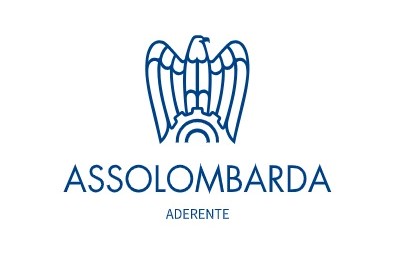Amoebiasis
Amoebiasis is a disease affecting the large intestine. It is caused by the protozoan Entamoeba histolytica, which was given its name by German biologist, Fritz Schaudinn, in 1903, because of its ability to damage tissue (lysis). The World Health Organization estimates that about 50 million people worldwide are infected with the protozoan.
CAUSES
The infection is caused by an intestinal protozoan, Entamoeba hystolitica, which occurs naturally in two forms:
- The cyst, a dormant form that allows the amoeba to survive in extreme conditions (e.g. extreme stomach acidity) through which it infects the host organism;
- The trophozoite is the active form of the amoeba. On arriving in the intestine it resumes its vital functions, such as feeding and movement, which can cause the disease.
It has long been estimated that about 10% of the world's population is infected with Entamoeba hystolitica. However, in reality, almost all cases (90%) are due to other less dangerous species. In fact, we are currently aware of four morphologically identical Entamoeba species:
- E. histolytica (pathogenic)
- E. dispar (a harmless, very common coloniser)
- E. moshkovskii (less common, pathogenicity uncertain)
- E. moshkovskii (less common, pathogenicity uncertain)
E. hystolytica can coexist with the host, obtaining the nutrients necessary for its survival without causing harm (commensalism), or it can invade tissues, causing intestinal or extra-intestinal infections and, consequently, disease. Asymptomatic infections are the most common, but they can give rise to health problems in certain circumstances, such as in the event of an underlying diseases or immunocompromised individuals.
E. histolytica infection is multifactorial and depends on the interaction between the amoeba, the host, and the microbiota or pathogenic microorganisms. Much information has been obtained on the virulence factors, metabolism, and pathogenic mechanisms of this parasite. However, less is known about its relationship with the host during the different stages of the disease.
TRANSMISSION
In most cases, transmission occurs through food or water or food infected with the mature cysts, but transmission can also occur through oral-anal and oral-genital contact.
Houseflies can also be vectors, as they can carry the cysts in their intestines.
GEOGRAPHICAL DISTRIBUTION
Amoebiasis is widespread across the planet, with approx. 35-50 million people infected with E. hystolitica. It causes between 40 and 100,000 deaths per year, making it the fourth leading cause of death due to protozoan infection.
However, the distribution of cases is variable: prevalence varies widely between different regions of the planet, with an incidence of only 1-2% in temperate climates to 50% in many countries, especially in hot, humid regions. Incidence is higher in developing countries, where prevalence is linked to a lack of clean water, poor sanitary conditions, and the level of health services, where it is a major problem, particularly in children.
As travel and emigration to developed countries from endemic areas increases, the incidence and prevalence of amebiasis continue to rise. Because most patients are asymptomatic, diagnosis and treatment can be difficult for physicians, which can potentially lead to the continued spread of the disease.
Africa is the region of the world most affected by this infection, but it is a problem that remains unexplored, and the epidemiology of amebiasis remains highly uncertain in this part of the world.
In Central and Latin American countries, the parasite is endemic mainly to Mexico, Brazil, and Ecuador. In Mexico, for example, the incidence rate of intestinal amoebiasis from 1995 to 2000 was between 1,000 and 5,000 cases per 100,000 population per year. The risk of amoebiasis in Asian countries (Japan, Taiwan, and South Korea) has also increased over the past decade, particularly through sexual transmission.
As for Europe, most cases are imported and affect travellers and immigrants from endemic areas. Here, it is worth mentioning the case of Spain, where this disease was often present in the last century, but was virtually eradicated after improvements to drinking water and wastewater infrastructure.
SYMPTOMS
The parasite lives in the intestinal lumen, feeding on bacteria, scattered host cells, and residual food. Normally, the host’s body is able to keep it under control. However, due to unknown causes, E. histolytica can lead to a symptomatic infection, called intestinal amebiasis (IA) with varying degrees of severity.
Over the course of the infection, the parasite penetrates intestinal tissues and feeds on red blood cells and apoptotic and necrotic cells, causing symptoms ranging from abdominal pain and ulcerative colitis with mucus and blood (called amoebic dysentery), to appendicitis and ameboma (annular lesions of the cecum and ascending colon.
In rare cases, the amoeba can affect other organs, causing diseases, such as amoebic liver abscess (or ALA), pneumonia, purulent pericarditis, and even cerebral amebiasis, in which the infection affects the brain.
Interestingly, on a cellular and molecular level, IA has been compared to colon cancer metastasis, as both cancer cells and amoebas follow the same pathway to the liver and other organs, establishing invasive microecosystems that involve similar types of molecules and host cells.
DIAGNOSIS
Correct diagnosis of IA is critical to control the spread of amoebiasis. However, this can be challenging because diagnosis is based on clinical symptoms and laboratory tests lack high sensitivity and specificity.
In developing countries, diagnosis has traditionally been based on the identification of mature cysts in stool samples.
Although this is considered the gold standard for IA diagnosis, microscopic observation has critical drawbacks, including poor sensitivity (about 60%) and the inability to distinguish pathogenic amoeba from nonaggressive species. In addition, it can be difficult to differentiate between the four species of amoebae in the human colon and, even more so, from certain types of white blood cells.
Several variables such as storage conditions, sample processing times, fixed or unfixed samples, and parasite density, affect the results of microscopic observation.
ELISAs (enzyme-linked immunosorbent assay), based on the capture of amoebic antigens in faeces have been more successful. They have also allowed for the development of commercial kits that can even differentiate E. histolytica from E. dispar. These diagnostic kits make it possible to generate reliable results extremely rapidly, by following simple instructions. However, they are expensive because they require the use of monoclonal antibodies (mAbs) to capture the antigens, which is why they are not routinely used in clinical laboratories.
TREATMENT
Once the disease is diagnosed, the patient must follow a well-defined treatment plan. Numerous compounds have been used to treat IA, some of which have been removed from the market due to their toxicity.
Antiamoebics act on two different levels:
- At the luminal level, they only act on the intestinal lumen and are typically used in asymptomatic cases to treat nondysenteric amoebic colitis (these include Diiodohydroxyquinoline, paromomycin, and diloxanide)
- Systemically, they are absorbed into the bloodstream and act on the tissues (e.g. nitroimidazoles), which are more useful in symptomatic cases.
Treatment of symptomatic amebiasis normally relies on metronidazole because it is effective and commercially available at a low cost. This drug belongs to the nitroimidazoles group, which are effective against various parasitic protozoa, on both an intestinal and tissue level. These treatments are indicated in patients with symptomatic intestinal amebiasis and asymptomatic cyst carriers, but because of their rapid intestinal absorption, they are more effective against ALA.
Nitazoxanide, a derivative of nitrothiazolyl-salicylamide, is a broad-spectrum antimicrobial agent that fights protozoa, nematodes, cestodes, trematodes, and anaerobic bacteria.
Treatment of IA with nitazoxanide is more effective than metronidazole (70-90% cure rate). Although the mechanism of action is similar to that of metronidazole, the effectiveness of this drug may be due to the differences between the two molecules. Nitazoxanide interacts with and inhibits the enzyme pyruvate oxidoreductase, the same enzyme that reduces metronidazole and activates it, and products with nitazoxanide activation do not cause DNA mutations as has been observed with metronidazole.
PREVENTION
Amoebiasis can be easily prevented by adopting good, basic hygiene habits and having access to toilets and tap water. Only people who live in or travel to endemic areas are at risk.
Although much effort has been devoted to the development of a vaccine against E. histolytica, there is still insufficient evidence to support effective and lasting protection against amoeba infection.
Responses in animal models suggest that it may be possible to develop a viable human vaccine, which could advance to go beyond the preclinical stage. Unfortunately, however, long-term immunological memory has not yet been demonstrated in animal models, a hallmark of a successful vaccine.
The fact that some people are able to develop partial immunity against this intestinal infection while remaining asymptomatic indicates that the potential for developing an effective vaccine is promising.
Bibliografia:J. C. Carrero, M. Reyes-López, J. Serrano-Luna, M. Shibayama, J. Unzueta, N. León-Sicairos, M. de la Garza. Intestinal amoebiasis: 160 years of its first detection and still remains as a health problem in developing countries. International Journal of Medical Microbiology. 1438-4221/ © 2019 Elsevier GmbH
M. Kantor, A. Abrantes, A. Estevez, A. Schiller, J.Torrent, J. Gascon , R. Hernandez, C. Ochner. Entamoeba Histolytica: Updates in Clinical Manifestation, Pathogenesis, and Vaccine Development. Canadian Journal of Gastroenterology and Hepatology Volume 2018, Article ID 4601420, 6 pages
K.Król-Turmińska, A. Olender. Human infections caused by free-living amoebae. Annals of Agricultural and Environmental Medicine 2017, Vol 24, No 2, 254–260




